- News
- Reviews
- Bikes
- Accessories
- Accessories - misc
- Computer mounts
- Bags
- Bar ends
- Bike bags & cases
- Bottle cages
- Bottles
- Cameras
- Car racks
- Child seats
- Computers
- Glasses
- GPS units
- Helmets
- Lights - front
- Lights - rear
- Lights - sets
- Locks
- Mirrors
- Mudguards
- Racks
- Pumps & CO2 inflators
- Puncture kits
- Reflectives
- Smart watches
- Stands and racks
- Trailers
- Clothing
- Components
- Bar tape & grips
- Bottom brackets
- Brake & gear cables
- Brake & STI levers
- Brake pads & spares
- Brakes
- Cassettes & freewheels
- Chains
- Chainsets & chainrings
- Derailleurs - front
- Derailleurs - rear
- Forks
- Gear levers & shifters
- Groupsets
- Handlebars & extensions
- Headsets
- Hubs
- Inner tubes
- Pedals
- Quick releases & skewers
- Saddles
- Seatposts
- Stems
- Wheels
- Tyres
- Health, fitness and nutrition
- Tools and workshop
- Miscellaneous
- Cross country mountain bikes
- Tubeless valves
- Buyers Guides
- Features
- Forum
- Recommends
- Podcast
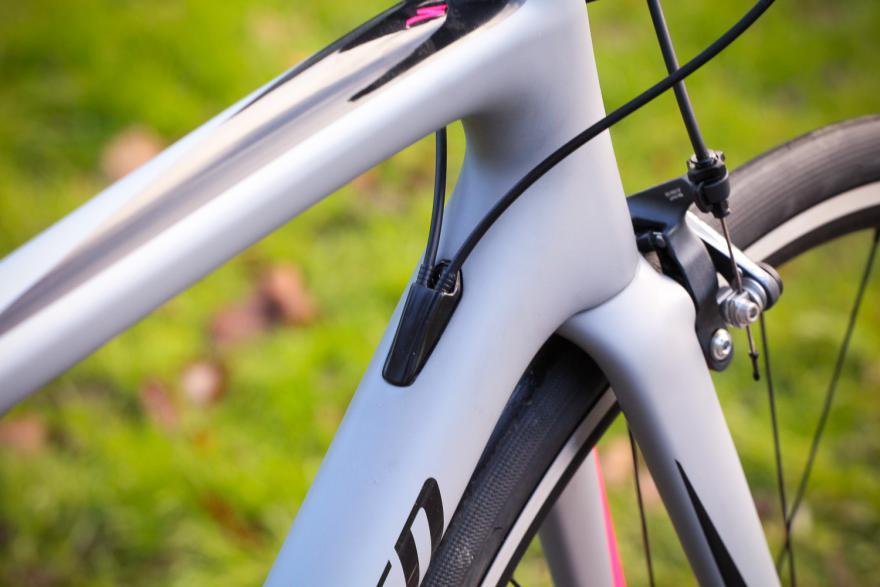 specialized-womens-tarmac-sl6-cable-route.jpg
specialized-womens-tarmac-sl6-cable-route.jpgTech Trends: Cable routing's new one hole wonders
Cable routing needn’t be tricky, but it’s something that many bike brands still consistently get wrong. Something as seemingly mundane as how the cable is routed from shifter to derailleur is a design feature you would think had been ironed out many years ago. But cable routing, just like fashion, keeps on changing.
How your cables are routed isn’t usually something you give much care to, until that time when it causes issues either due to poor performance or fitting fresh new cables. Until we live in an age of entirely wireless groupsets, cable routing is still going to occupy a chunk of time in the design process of a new bike.
The latest trend that we’ve spotted on bikes for the last year or so is to route the cables into the top of the downtube via one single port, with a single hole rather than multiple holes dotting the side of the head tube or downtube.
One noticeable benefit for both the bike maker and owner is the easy compatibility with any groupset, as the plastic plugs can be swapped out to suit any groupset, from mechanical to electronic and wireless. There's also an arguable aesthetic benefit of having one hole instead of two.
And according to Scott, a company which used this cable routing on its new Foil Disc, the cable routing is more aerodynamic than cables entering the side of the head tube.
And when used with an electronic groupset like Shimano’s Di2, the port can be filled with the junction box, a much more elegant solution than zip tied it to the stem as we’ve seen for many years. With SRAM’s eTap wireless groupset a blanking plate is used which at least removes unsightly holes from the side of the frame.
Here then are a selection of bikes with this on-trend cable routing from the likes of Colnago, Pinarello, Cervelo and many more. As an added bonus, how many of these bikes can you identify?
Is this the future of all modern road bikes then? It's starting to look a bit like that on high-end bikes, and what first appears on top-end bikes usually trickles down to the cheaper end of the range, so it's very likely your next bike will have this sort of cable routing. And that's no bad thing, as it's one of the smarter solutions we've seen to the sometimes tricky business of routing cables inside a frame.
But let's hear what you think of internal cable routing in the comments below.
David worked on the road.cc tech team from 2012-2020. Previously he was editor of Bikemagic.com and before that staff writer at RCUK. He's a seasoned cyclist of all disciplines, from road to mountain biking, touring to cyclo-cross, he only wishes he had time to ride them all. He's mildly competitive, though he'll never admit it, and is a frequent road racer but is too lazy to do really well. He currently resides in the Cotswolds, and you can now find him over on his own YouTube channel David Arthur - Just Ride Bikes.
Latest Comments
- Mr Anderson 2 sec ago
This location is absolutely literally a stones throw from Bexley Civic Offices, which can just be seen in the background of the Newsshopper picture...
- wtjs 4 min ago
Agreed. He has to turn his 2.175m (35mm tyres) wheel about 148 times in a minute, and he's performing 12 complete crank revolutions per minute, so...
- SpiffySmurf 23 min 52 sec ago
I went from 165mm to 155mm cranks this winter and my average power is up about 10 Watts and my average speed is up 1 mph on the indoor trainer. My...
- eburtthebike 35 min 19 sec ago
Traffic calming that makes it more dangerous for cyclists.
- Steve K 1 hour 7 min ago
Isn't the expression "I don't have a dog in this fight", not "knife"? (Sorry, that's just an irrelevant aside.)
- Rendel Harris 1 hour 27 min ago
Perhaps you should read the comments, including your own, a bit better then as nobody was discussing whether the product will make a profit or not...
- Jakrayan 2 hours 1 min ago
It's behind a paywall, however this link should allow you to view it. Though that might be giving him oxygen. ...
- ChrisA 2 hours 8 min ago
Really, really poor journalism, I thought. Complete lack of clarity.
- slc 2 hours 30 min ago
I'll miss Woodes if it does indeed vanish, but the idea that motorists kept it going is bizarre. It is surrounded by some major workplaces in easy...
- Steve K 2 hours 38 min ago
Some news coverage did mention bikes.
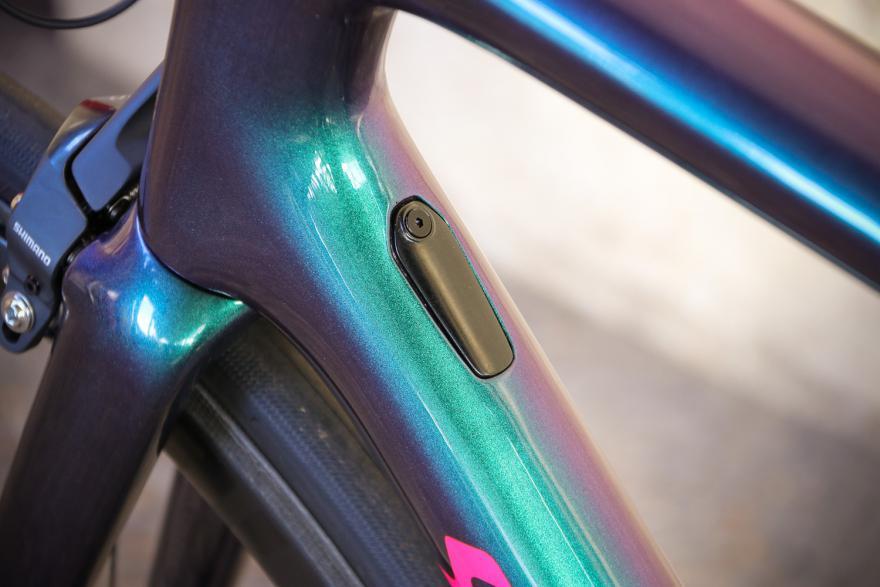

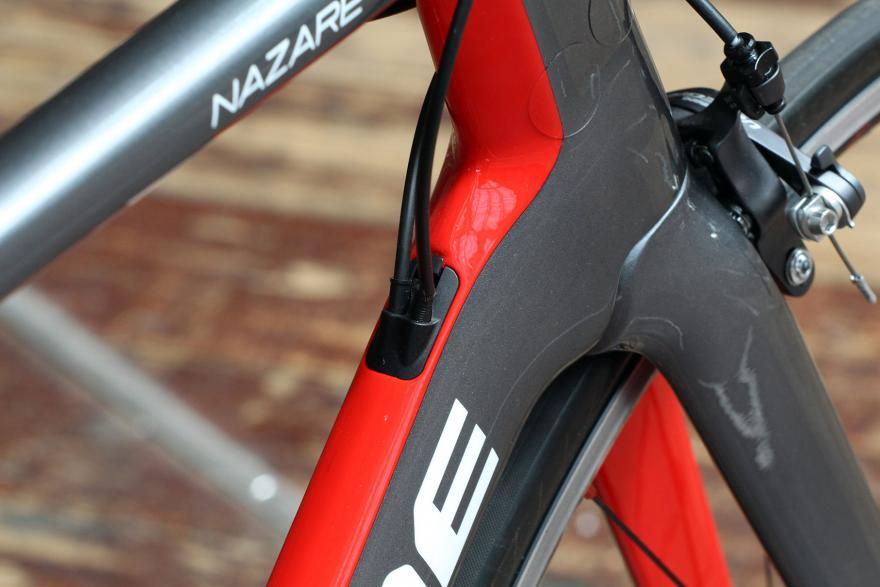


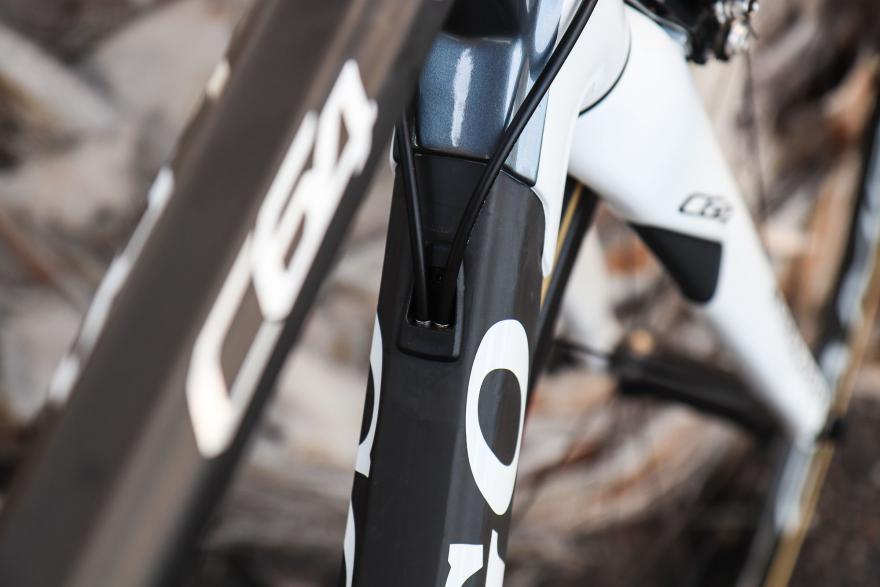

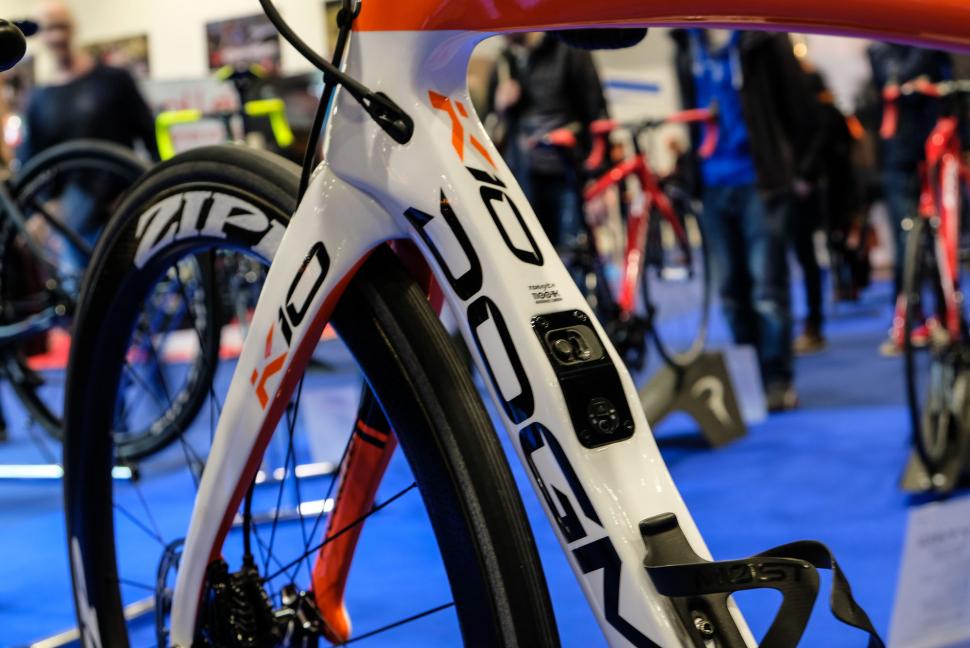

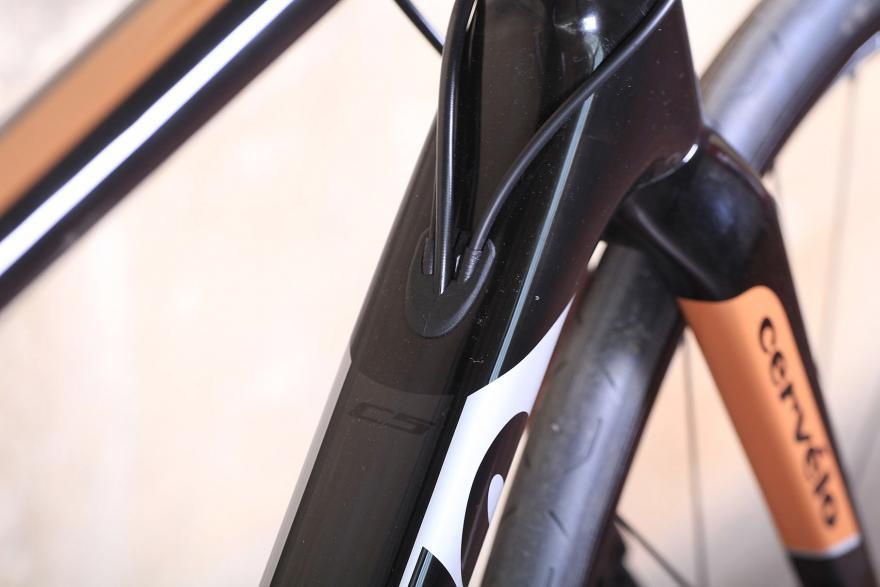
Add new comment
15 comments
This is hardly new, I own a 2014 Cervelo R3 which came with manual ultegra. The downtube port cover simply swapped out for a new rubber one when I got di2 fitted. Cervelo HO even contacted the supplier here in Hong Kong and arranged for collection.
Unfortunately this style of cable routing means that the cables will inevitably rub the sides of the head tube, requiring the application of helitape +/- rubber cable sleeves if you don't want to ruin the paintwork (or worse).
I much prefer the cables to enter the frame straight into the side of the headtube so cable rub is eliminated.
All but two of these, which are probably the same brand, look to be different designs. What would be the odds of finding a different cover for an upgrade to a 5 year old bike? Versatility is good, but unless the bike comes with all the types of covers originally it won't be in practice. It's the little parts that are always the pain when building or upgrading a bike.
I had similar on my Merida Cyclocross which had the mech cables entering the top of the down tube. On the plus side this eliminated cable rub on the head tube but it didn't look particularly neat with two big loops of cable visible on either side from head on. Merida run the cables crossed in this configuration too - with the rear mech cable entering the non drive-side port and vice versa.
If the Merida had a fork drilled for dynamo lights there would have been a further benefit as the cables would have been well clear of the light housing.
One of my current bikes has cable stops on the front of the head tube - great again for eliminating cable rub, particularly when run crossed, but less good for light clearance. The other has stops in the traditional downtube position with the usual cable rub problems.
On balance because I like working on my own bikes I would try to avoid internal routing. I like the simplicity of replacing external mech cables on Shimano as you can even get away without removing the bar tape. Aesthetically some bikes just look better with external cables to my eyes.
Won't these top-of-the-tube ports let water get in?
It's beyond joke how stupid some internal routing designs are. In our shop we had to send the whole bike (one of the leading brands) back to the supplier because indexing rear mech was impossible. I don't mean fiddly or time consuming. I mean technically IMPOSSIBLE.
Some another leading brand bikes only worked with expensive Shimano Poly inner wires and still with quite a small margin of error.
Internal routing is brilliant on the paper but in real life creates lots of headaches and offer no benefits.
Traditionaly routed exposed gear wires with down tube stops and bb slider look much cleaner than any of the above bikes, anyway.
With regard to Di2, a better system would be to have insulated conductive tracks on the inside of the frame, connecting all parts of the system. After all, the cables are just single core and earth. The junction box is literally just a junction box, nothing more. If you use conductive tracks, you eliminate the need for any internal cables, and you move all sockets to the frame entry points. You save on the [small] cable weight and cable ties and you make the whole process of installation and maintenance much, much simpler.
And if in ten years time the tracks fail, you just shove the Di2 cables in there anyway.
With regard to brake cables and manual gear cables, I'm a fan of keeping them outside. It's much easier to look after the bike that way and eliminates the extremely annoying rattles that always accompany poorly-designed internal cable systems.
I saw a prototype of conductive tracks painted on the outside of the frame between paint layers on a bike at BeSpoked in London in 2012. I liked the concept*, but looked like a manufacturing nightmare. The example had clear laquer over the top so you could see them, production would, obviously, hide them. Still left you with issues with electrical insulation, standardising the connections, waterproofing, getting around various frame joints, worrying about cracks due to frame flexing/temperature expansion and so on.
I agree with you for brake and manual gear cables being left outside.
As it happens, my best bike has an internally routed rear brake cable, but on that frame you just run a single piece of outer from shifter to caliper through an internal straw, so no fiddling around or rattling - although not the lightest solution, it looks very elegant.
* - in so far as I liked the engineering. I've still no intention whatsoever of moving to an electronic groupset.
those are some fugly ports..... not becasue there is one or many, but becasue they just look cheap. Surely it wouldnt cost that much to make them more discrete (colour code, flush integration etc)
Why do you have to disconnect all the cables to fix one? Just get some of that plastic cable fitting tube, slide it over the existing cable. remove cable and then rethread the new cable through the plastic tube. Surely it doesn't matter not how many holes the cables are threaded through in the frame?
Hydraulic Di2 is the solution I’ve gone for. Don’t anticipate having to change any hoses or electronic cables for some time... which can only be a good thing with internal routing.
PP
Looks like utter garbage on any frame, an exercise in cost cutting compromise
<citation needed re cost cutting>
Maybe you'd prefer three different ports all over both sides of the head tube/downtube junction, with cables sprouting left and right?
Also: making a single port, larger, will make replacing cables easier.
I agree that it doesn't look worse than the usual way.
But this also means that you will always have to disconnect both cables if you have to fix one.
Mind you, that is already the case with my Cannondale Synapse, because of the silly routing near the bottom bracket.
Not so long ago, we were blessed with the choice between mechanical, electronic or dual use framesets, so you didn’t have to have various redundant ports if you knew what you wanted to build. You could have the ports in the most practical place for their intended use even, cable ports that limit the curves of gear housing, electronic ports wherever they’re supposed to go, or none at all. Now we’re expected to sweep our cables to the top of the down tube like some sort of mullet and told it’s progress. The C64 kind of gets it right with the fully internal electronic/hydraulic stem solution and no external cables, but you’ll still have that awful looking plastic cover staring at you. These are £4000+ framesets, it’s not too much to expect them to better tailor your luxury product to your needs.